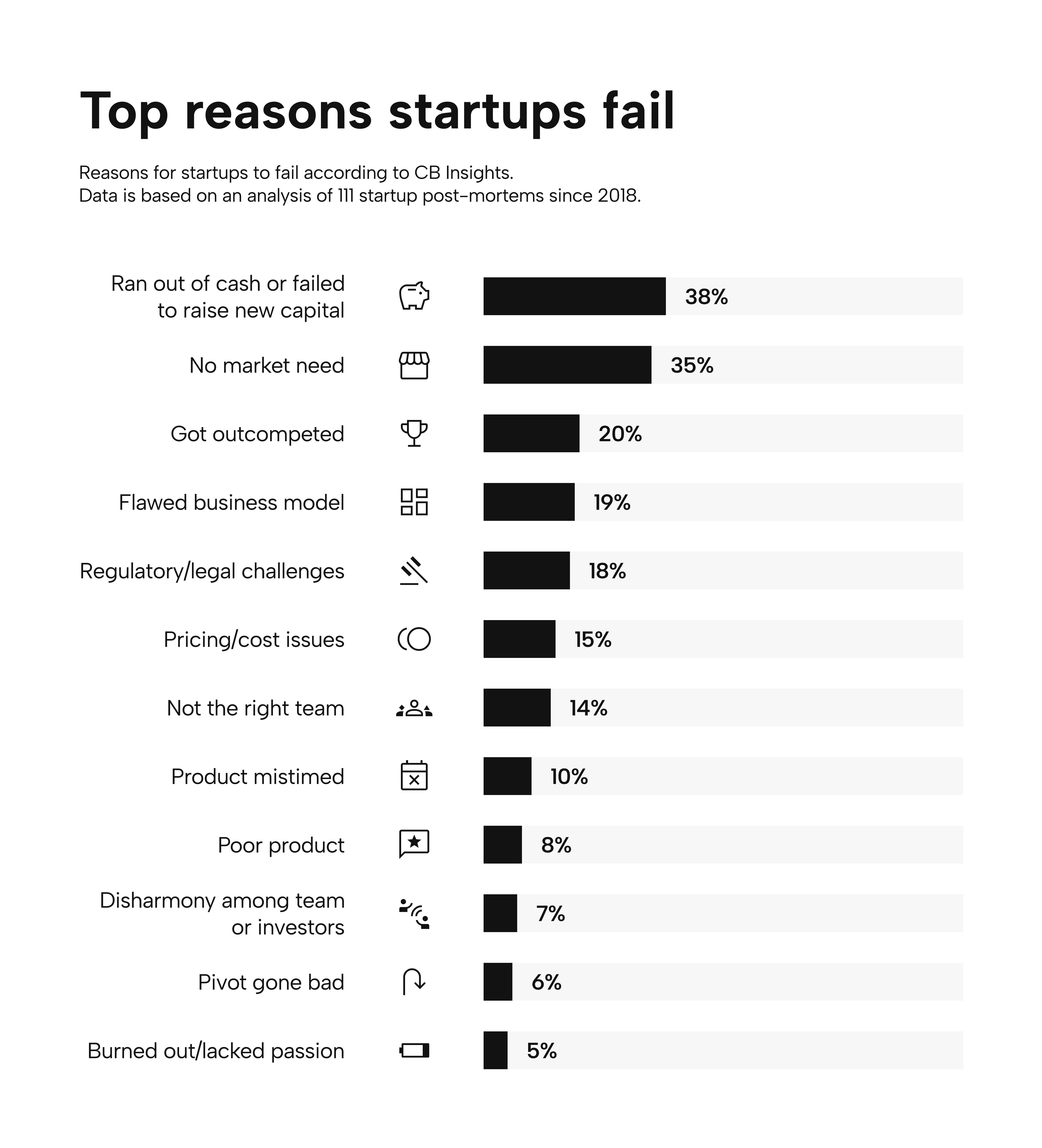
Creating a startup has never been easier, thanks to technology innovation, open-source solutions, and Accelerators' support. However, the initial excitement is often followed by a reality check that most companies don't pass. While the reasons for startup failure are numerous, feature rush seems to be a recurring theme. How can it impact your business journey? Let's find out in this article.
According to Startup Genome’s report from 2022, 90% of startups fail. The fiasco has no unique cause, but most of these companies tend to show self-destructive behaviors rather than being overcompeted. There’s no denying that the financial aspect is essential in the startup ecosystem, as presented in the infographic below. However, as CB Insights pointed out in their study, the lack of a clear market need and flawed business models seem to be other significant drivers of startup disasters.

The Startup Genome’s analysis leads to yet another conclusion. Most startup founders tend to lose focus and spread too thin trying to satisfy the non-confirmed market demands. Neglecting the discovery phase results in premature scaling in different dimensions, including operations and engineering. As for the latter, startups often fall into the feature rush trap, investing in new, fancy functionalities before even finding the Product Market Fit. Inspired by global giants such as Apple, Uber, or Facebook, they wish to build a robust, complex platform from day one, which is neither sustainable nor realistic. No wonder many startups don’t even survive the first year.
Let’s dive a bit deeper into the feature rush concept. It boils down to adding new functionalities to your product without a valid reason for doing so. While developing new features and investing in your company’s technology part is not wrong per se, it should never precede thorough research around user expectations and market needs. Each feature you decide to add is yet another thing to maintain, pay for, and manage, so it needs to be justified to make sense financially. What many startup founders do (and what leads them to trouble) is put cool, disruptive technology above solving actual problems and generating real value. They overbuild their products and gradually dilute their focus from what’s important. It quickly backfires, resulting in lower customer retention, increased tech debt, and money waste.
It already sounds intimidating in theory, but what impact does feature rush have on businesses in practice? Let’s examine some real-life stories.
Failory did a great job of gathering 200+ startup failure accounts in one place for all of us to learn from. Many of these companies actually fell into the feature rush trap during their journeys.
One of the startups that encountered the problem of premature scaling was Katerra, which aimed to become a construction project management company. The selling point was promising, but the execution didn’t lead to success when confronted with market reality. The founders made the mistake of creating too many features that would tackle too many problems. This lack of focus came at a significant cost, leading to the company’s bankruptcy in 2021.
A similar fate befell Quirky, a startup in the financial vertical. The team wanted to introduce multiple ideas without first confirming the clear market needs. This “quantity-over-quality” approach resulted in a product that didn’t provide real value to its customers, forcing the company to shut its doors after only 6 years.
Premature complexity killed many other startups, including a legal tech company called Atrium. They seem to be a classic example of a feature rush victim. Growing their business at too fast of a pace, introducing complex solutions from day one, and trying to become a full-stack organization didn’t end well and resulted in a shutdown in 2020. They never managed to find the Product-Market fit.
There seems to be a pattern to those cases. Adding new, fancy features just for the sake of it, without a solid business rationale, leads to unnecessary spending and neglect of more critical aspects, such as Product-Market fit, user feedback, industry landscape, etc. Core business value fades away, leaving the scene to the aimless pursuit of new innovative functionalities.
As described in the examples above, mindlessly adding new features can have a destructive effect on your business. You may be wondering: What should I do instead, then?
If you want to take your software to another level, confirm that what you already have serves its purpose. Fixing bugs in your existing product, enhancing user experience, or even removing some of the features can be great starting points. These decisions should be based on feedback and hard data to ensure you always provide more value for your user base.
If you want to find more alternatives to building features, you might want to check out our article on the subject!